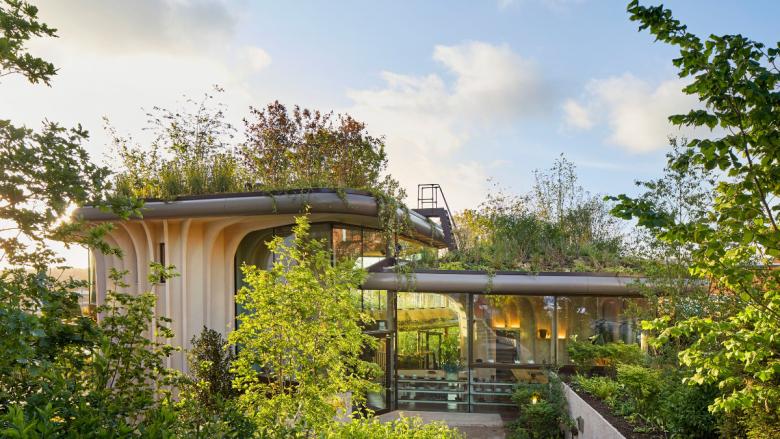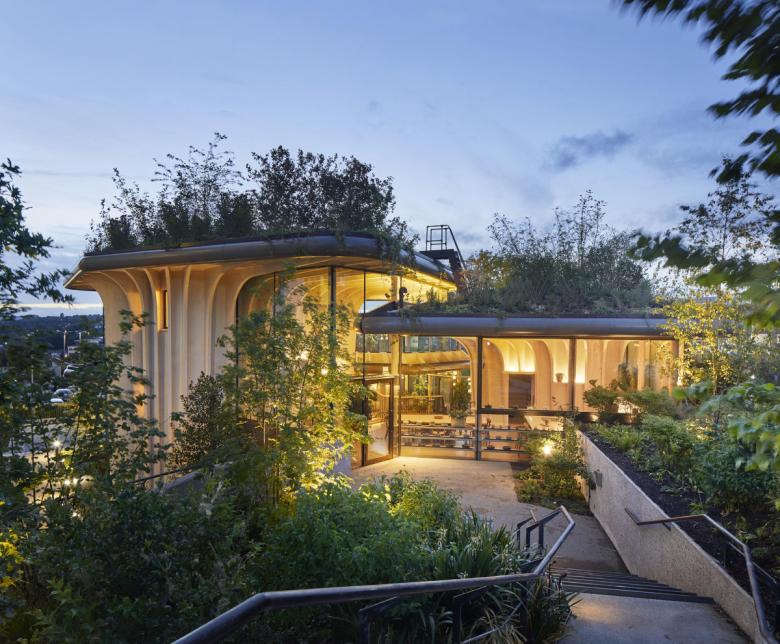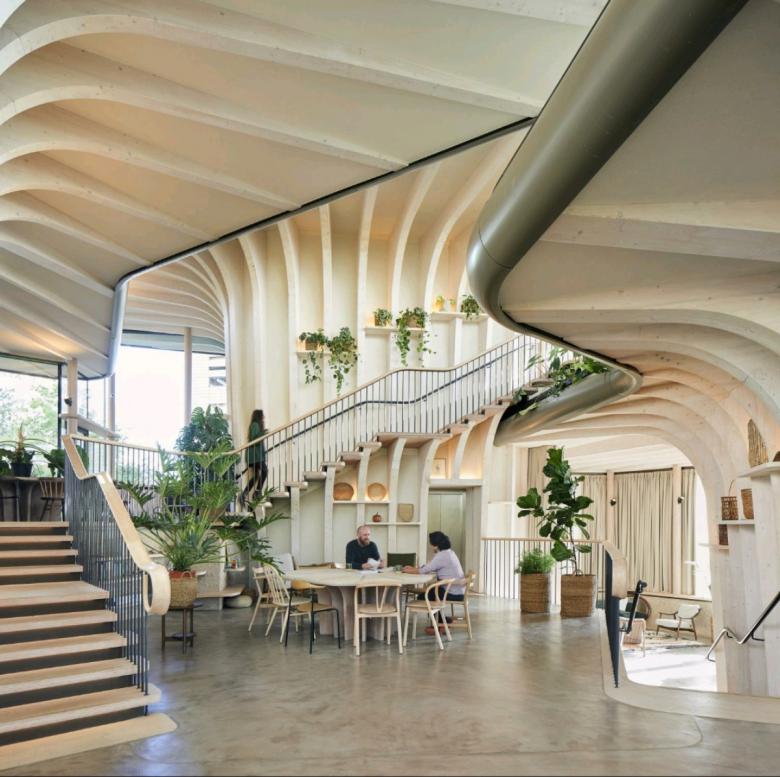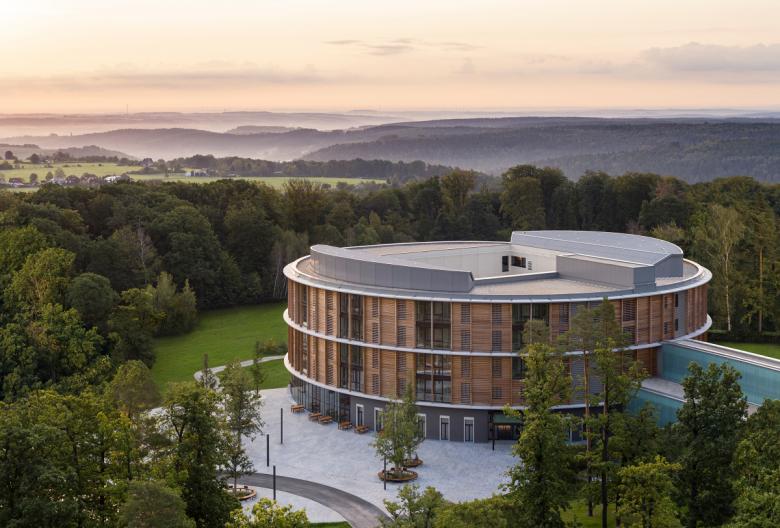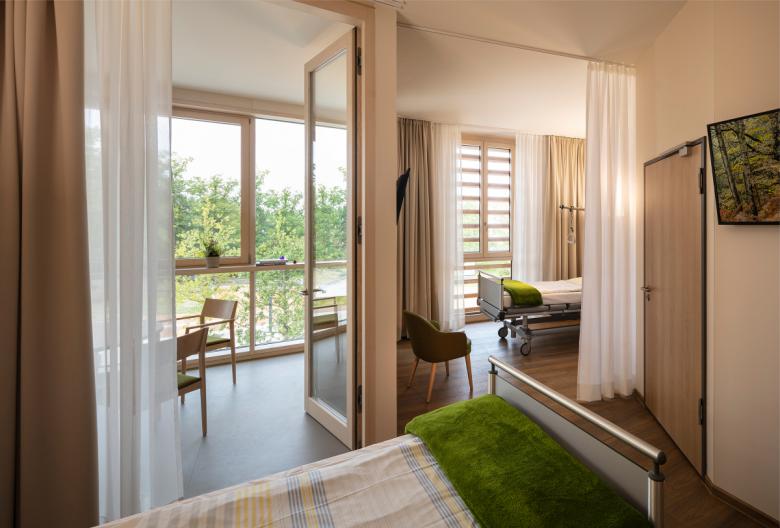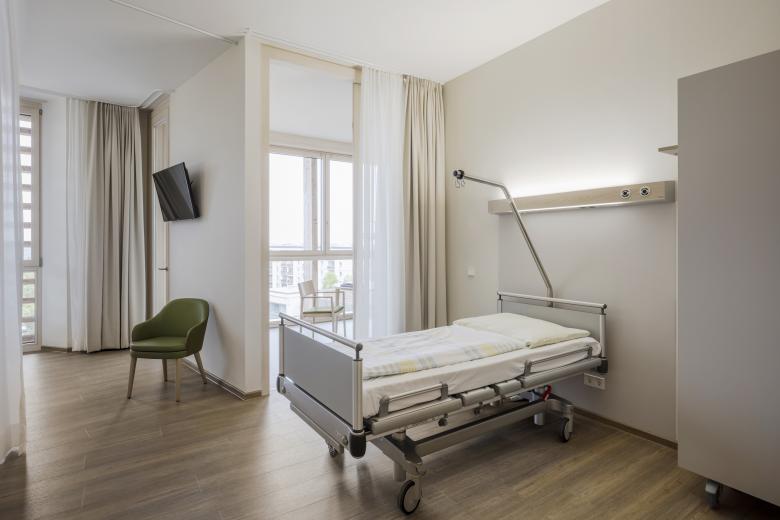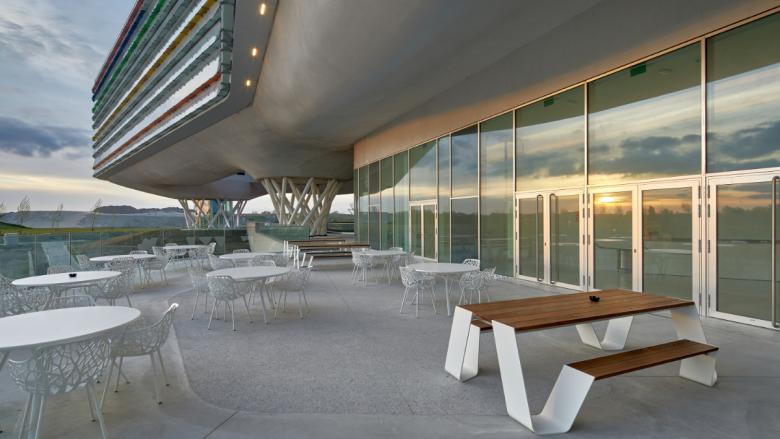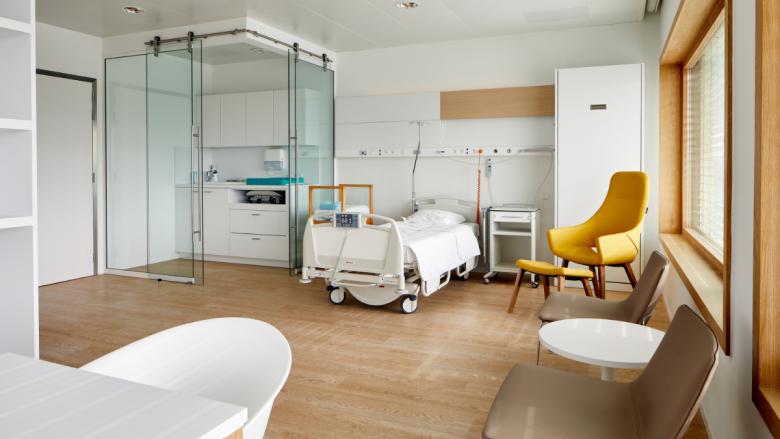Designing Healing Spaces
Creating well-designed hospitals is an enormous challenge, as they must cater to a variety of needs. Four examples from Europe demonstrate how hospitals can become places of recovery.
The significance of our senses in architecture is more evident in hospitals than in any other building type. Ill people are particularly sensitive; they have finer antennae than the healthy. Sight, hearing, smell, taste, and touch are altered under stress, which is counterproductive in the healing process. Moreover, the hospital staff also belongs to a vulnerable group that is exposed to extreme stress during their work. Empathizing with these experiences, in addition to meeting architectural and economic requirements, is one of the major challenges when designing healthcare facilities.
The understanding that well-designed spaces can facilitate the healing process is not new. Hospitals have always reflected societal and scientific developments, as the history of hospital architecture demonstrates. However, tremendous advances in medicine, among other factors, led to a purely functionalist interpretation of this architectural typology. As complexity increased, hospitals transformed into sterile healing machines. This is precisely where the problem lies. When building standards and economic constraints become the sole guiding principles for hospital construction, the needs of both the sick and those working with the ill are at risk of being compromised. Instead of healing, these buildings are then making people ill. To ensure hospitals are not perceived as unhealthy places but continue to serve their role as healthcare institutions, we need new approaches. These approaches must once again prioritize people: those seeking healing and those working in healthcare centers.
Knowledge of the effect of the environment on people, including the specific perceptions of the ill, is available. Research methodologies like "evidence-based design," originating from the United States, confirm this. What is needed is an architectural translation of these insights—a so-called Healing Architecture. The following four recent examples from Europe demonstrate that healthcare architecture is undergoing a transformation. They also provide important impetus for the development of new models.
Hospital Nova by JKMM Architects is Finland's first entirely newly built hospital since the 1970s. This project combines the clinical requirements of an innovative next-generation hospital with an intuitive design inspired by the Finnish nature. The concept is based on a division into four building typologies. The architects view the hospital as a small city, emphasizing the ongoing transformation to which this building typology is subject. This transformation is due in no small part to the rapid changes occurring in the healthcare sector.
The film-like installation "Hospital of the Future," presented by the Dutch architecture firm OMA at the 17th Architecture Biennale in Venice in response to the COVID-19 pandemic, also pointed in this direction. In this context, AMO, the firm's think tank, emphasized that the hospital of the future must be conceived as a modular system adaptable to current needs. This vision is reflected in the organization of Hospital Nova. Here, consistently active functions like emergency surgery are housed in a compact section, while spaces for outpatient consultations are designed like a "Health Shopping Mall." The 360 consultation rooms are grouped around a central hall, facilitating orientation within the building. Patients can stay in the same room for different consultations, avoiding the need to move between different parts of the hospital.
The hotel-like atmosphere of the patient rooms exudes a friendly ambiance, providing a sense of security for patients and their families. Nature served as inspiration for the interior design. Numerous studies have attested to the healing effects of nature, that can be achieved just by looking out of a window. Teemu Kurkela, co-founder of JKMM and lead architect of Hospital Nova, summarized the project as follows: "Together with the hospital, we envisioned creating a Finnish hospital of the future. As outsiders in hospital planning, we found it exciting to develop new conceptual, functional, and technical innovations. At the same time, we wanted to create an architecture that places the patient at the center. The Finnish nature as the main theme of the design helped us create inviting and humane spaces." Despite the size of the building, the primary goal was to achieve a healing environment.
This philosophy is also pursued by the Maggie’s Centres, initiated by Maggie Keswick Jencks. As a seriously ill cancer patient, she experienced firsthand the feeling of being rejected by a building. She wanted to change that. In 1996, shortly after her death, the first Maggie’s Centre was opened in a former stable in Edinburgh. Today, thanks in part to the efforts of Maggie's husband, the American architecture critic Charles Jencks (1939-2019), there are thirty centers, mainly located in the UK, but also in Barcelona, Hong Kong, and Tokyo. All designers, including renowned figures like Zaha Hadid or Frank Gehry, are given the same briefing: the connection to healing nature is crucial. The aim is to create welcoming places where patients and their families can seek advice free of charge.
Heatherwick Studio, based in London, was responsible for the design of Maggie’s in Leeds (Yorkshire). Situated in the midst of a complex of hospital buildings, the available land was one of the few green spaces on the grounds. The studio decided to emphasize this aspect and conceptualized the architecture as a plant. On the sloping terrain, Heatherwick Studio designed the building as a group of three structures reminiscent of trees. Embracing Maggie's belief that good design can help people feel better, natural materials and ecological construction techniques were employed. The building structure consists of a prefabricated spruce wood system. Porous materials like lime plaster help maintain humidity inside the naturally ventilated building. The bright interiors with their homely design are inviting people to linger.
Light and comfort also characterize the design of the Waldkliniken Eisenberg. The architecture is the result of a collaboration between Matteo Thun and the German-American architecture and engineering firm HDR. The round building of the orthopedic center exudes warmth through the generous use of wood alone. The building with 128 patient rooms places temporary residents and their needs at the center. The interior design and architecture combine the aesthetics of hotel projects with healthcare. The fact that the CEO and initiator of Waldkliniken, David-Ruben Thies, is a trained nurse, demonstrates the importance of the users' perspective in implementing healing architecture.
The AZ Zeno in Knokke-Heist, Belgium, is also dedicated to the theme of healing architecture. This is indicated by the playful headline on the website of the architecture firm B2Ai, which refers to René Magritte's quote "Ceci n'est pas une pipe": "Ceci n'est pas un hôpital (but a healing environment)". In terms of form, too, the architects were inspired by the famous Belgian artist. The building seems to float above the ground, conveying a sense of lightness and a seemingly seamless transition between outdoor and indoor spaces. The interweaving of healthcare facilities and public spaces breaks with conventional hospital architecture, which is based on a separation between the sick and the healthy. The building is not only socially sustainable but also exemplary from an ecological perspective. The multidisciplinary team also sought to optimize its integration into the natural landscape, thus ensuring that the hospital is perceived as "living architecture", according to a statement from the office.
These four buildings are best-practice examples, showcasing possible approaches for healthcare architecture of the future. The designs are primarily oriented around the human scale: people and their bodies, sensory perceptions, and mental faculties. When considering these variables, architecture can become a part of the healing process.
This article is part of the "Healing Architecture" theme special, in which we discuss with key national and international experts the criteria that can be used to create a high quality of stay in healthcare buildings. Additionally, we showcase healthcare buildings where this topic is already made a priority.
For the first article in the series, we have brought together interior designer Sylvia Leydecker, architect Prof. Linus Hofrichter, and economics expert Prof. Dr Boris Augurzky, three key players who are regularly confronted with the topic of hospital planning and the economic aspects in this area. Read the interview
